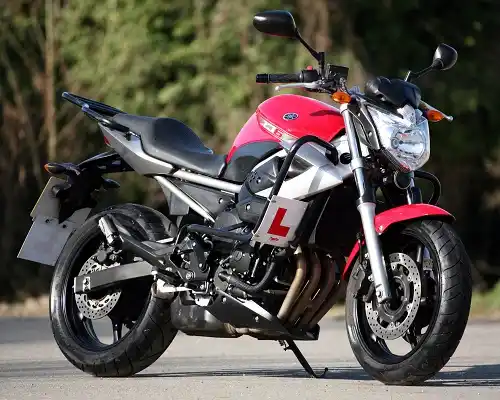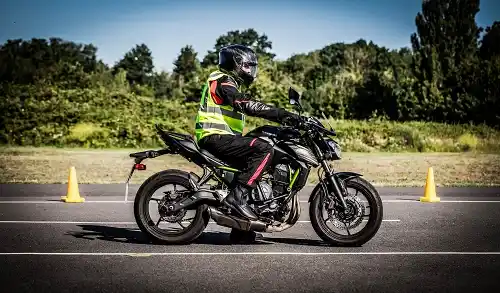Book motorbike training in Bletchley, Buckinghamshire with any of the companies listed here
Click on any of the motorcycle training schools below to view more information and check availability.
EZ Rider Milton Keynes
MK City Football Club, Tattenhoe Lane, Bletchley, Milton Keynes, MK3 7RB
Approx. distance: 1 miles
Learn2Ride Motorcycle Training Milton Keynes
The National Bowl gate 1, V4 Watling Street, Milton Keynes, MK5 8AA
Approx. distance: 1.2 miles
90 One Education Milton Keynes
Marsh Drive Sports ground, Great Linford, Milton Keynes, MK14 5HH
Approx. distance: 4.8 miles
Phoenix Motorcycle Training Milton Keynes
The Ridgeway Centre, Featherstone Road, Wolverton, Milton Keynes, MK12 5TH
Approx. distance: 5.1 miles
Ridewell Motorcycle Training Milton Keynes
23 Hesketh Road, Yardley Gobion, Northants, NN12 7TS
Approx. distance: 8.6 miles
Chiltern Motorcycle Training Bedfordshire
Dunstablians RUFC, Houghton Regis, Bedfordshire, LU5 6JW
Approx. distance: 11.3 miles
Bedford Motorcycle Training
Tippings, Bedford, Bedfordshire, MK43 9HJ
Approx. distance: 11.5 miles
1 On 1 Rider Training Ltd Bedford
Faldo Farm, 1 Moat View, Faldo Rd, Barton-le-Clay, Bedford, MK45 4RF
Approx. distance: 13.7 miles
Aylesbury Motorcycle Training
Aylesbury Rugby Club, Brook End, Weston Turville, Aylesbury, Buckinghamshire, HP22 5RN
Approx. distance: 14.4 miles
Camrider Bedford
Oasis Leisure Pool, Cardington Road, Bedford, Bedfordshire, MK42 0BZ
Approx. distance: 15.6 miles

Find motorbike training in Bletchley, Buckinghamshire
If you are looking for motorbike training in Bletchley then look no further! We have all the information here for you to find suitable motorcycle training and testing close to you or in the surrounding areas of Fenny Stratford, Milton Keynes and Woburn Sands.
What are the different types of motorcycle licence I can get in Bletchley?
There are 4 main types of full motorcycle licence issued by the DVSA. The first three (AM, A1 and A2 motorcycle licences) have restrictions on the type of moped or motorcycle you can ride, the fourth (the full A motorcycle licence) has no restrictions.
The AM restricted moped licence
The A1 restricted motorcycle licence
The minimum age to take this test is 17. According to the DVSA website it will allow you to ride a "Light motorcycle up to 11 kW (and a power-to-weight ratio not more than 0.1 kW per kg) and 125 cc". This means it's up to a 125 cc motorcycle with some restrictions to make sure it cannot accelerate too fast - a really good idea when you are new to riding a motorbike!
Requirements to take the A1 motorcycle test - You must have a UK provisional or full driving licence, a valid theory test certificate and a valid CBT certificate. Once you have taken this test you will not have to keep renewing your CBT certificate every 2 years, you can ride on motorways and you can take a pillion passenger on the back of your motorbike.
The A2 restricted motorcycle licence
For this licence you need to be at least 19 years of age, have completed your CBT or have had an A1 licence for at least 2 years. As with the A1 test you also need to have a UK provisional or full driving licence and a valid theory test certificate . The main benefit of getting an A2 licence is you can ride a more powerful motorcycle. The law states a "standard motorcycle up to 35 kW (and a power-to-weight ratio not more than 0.2 kW per kg)". So it's a more powerful bike, but still not completely un-restricted. To find A2 legal motorbikes you are best visiting your local motorcycle dealer and asking them to show you the A2 legal bikes, as otherwise it's very difficult to work out just looking at the tech specs.
The full A motorcycle licence, or DAS licence.
This is the licence that allows you to ride almost any motorcycle without restrictions, so it's the ultimate motorcycle licence. No limits on power outputs or power per kg or engine size! It is also called a 'DAS' licence as it can be obtained from the 'Direct AccesS' route. There are two ways you can get this licence:
1) If you are 24 or over you can take the tests for an A licence. You must also have a UK provisional or full driving licence, a valid theory test certificate and a valid CBT certificate.
2) If you are at least 21 years of age and you have held an A2 category licence for at least 2 years. This is sometimes referred to as the 'progressive access' route as you progress from one licence to another.
When taking the test the biggest difference is that you have to use a bigger, more powerful motorcycle. It will have a power of at least 40kw and an engine cc of at least 595 cc. Your local training school will make sure you have the right size bike for your test.
There is also a flowchart (click here) that the DVLA have produced that shows these different licences and how to obtain them.
To get more detailed guidance on what licence is right for you then talk to your local motorcycle training school. You can search for them here and they are qualified to speak to you on the right type of training for you.
What is the Enhanced Rider Scheme (ERS)?
This scheme was devised by the DVSA and the motorcycle industry. The ERS course is run by many motorcycle training companies around the UK. It is for anyone who has a full motorcycle licence and wishes to check their safe riding skills. Not only will it make you a better rider but some insurance companies offer cheaper motorcycle insurance if you have been issued with a DVSA Certificate Of Competence. You will receive this certificate at the end of your ERS course if the instructor deems you to be a safe rider. If the instructor feels you need additional training it may be given on the day, or if it is felt you need a larger amount of training then you may need to come back on another day. Although ERS is not a test it is much like a CBT: provided you demonstrate a safe level of riding and knowledge during the day then you will be issued with your certificate.
The DVSA has produced a short video showing what the Enhanced Rider Scheme is all about:
Click here to watch DVSA video

How do I get the right training in Bletchley for the AM moped licence?
The AM moped licence is a restricted licence you can get when you are 16 or over. You can ride a moped of up to 50 cc and a top speed of 28 mph without Learner plates and you may carry a pillion passenger. If all you ever want to rider is a moped then this licence may be right for you. It is essential that you get the right training for this licence as without it you are likely to hurt yourself or even worse, someone else. Use this website to enter your postcode and search for your local motorcycle training school. They are all fully qualified to advise you on the training you will need. Although saving money is something everyone wants to do, the right training will save your life. Therefore don't just focus on price, look at the quality of training on offer and the standard of training.
How do I get the right training in Bletchley for the A1 motorcycle licence?
The A1 motorcycle licence is a restricted licence you can get when you are 17 or over. It is popular amongst 17 to 19 year olds as it is the only licence that allows you to get on a more powerful motorcycle at that age. It is essential that you get the right training for this licence as without it you are likely to hurt yourself or even worse, someone else. Use this website to enter your postcode and search for your local motorcycle training school. They are all fully qualified to advise you on the training you will need. Although saving money is something everyone wants to do, the right training will save your life. Therefore don't just focus on price, look at the quality of training on offer and the standard of training.